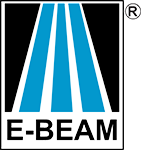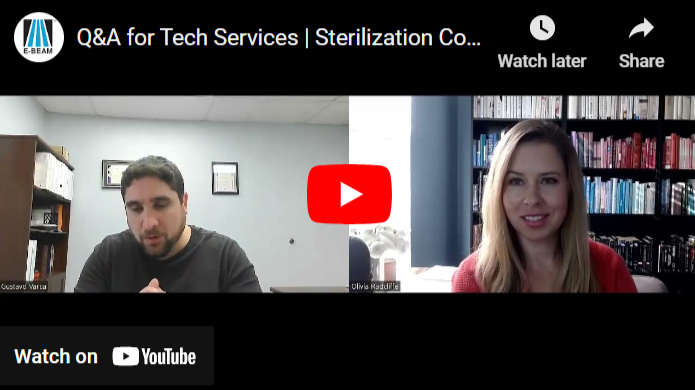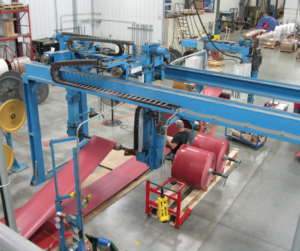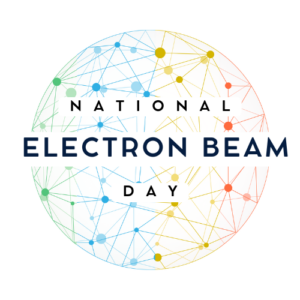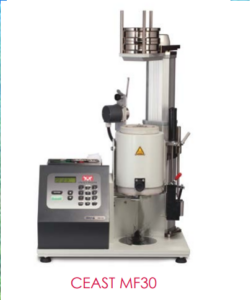Key Takeaways:
- Conversion from other sterilization methods to e-beam processing can be a viable option for many products, but it is important to consider the density and packaging configuration of the product.
- Products with medium to low density, such as bottles, lab ware, syringes, and pipette tips, are generally a good fit for e-beam conversion.
- Combination products or products with multiple densities require a closer evaluation.
- Short stack configurations are ideal for dense products, as they allow for better dose distribution and penetration.
- Layout processing, a technique that exposes combination products individually in the cart, can be used to overcome challenges with tight dose ranges.
Sterilization is a critical process in the medical device industry to ensure the safety and efficacy of products. While there are various sterilization methods available, such as ethylene oxide (ETO) and gamma radiation, e-beam processing has gained popularity in recent years. In the latest Q&A with Tech Services, Dr. Gustavo Varca explores the conversion from other sterilization methods to e-beam processing and discusses the factors to consider when determining if a product is a good fit for this conversion.
Conversion Considerations: Density and Packaging Configuration
When considering the conversion from other sterilization methods to e-beam processing, it’s important to evaluate the density and packaging configuration of the product. Products with medium to low density, such as bottles, lab ware, syringes, and pipette tips, are generally a good fit for e-beam conversion. These products can be directly converted from bulk packaging or oriented packaging without significant challenges.
On the other hand, combination products or products with multiple densities require a closer evaluation. Radiation sterilization methods, including e-beam processing, require selecting a dose that ensures the entire product receives the minimum required dose. However, some regions of the product may receive a higher dose due to the varying densities within the product. This can be a challenge for combination products, as certain components may be more sensitive to radiation doses than others. While it is possible to convert combination products to e-beam processing, a thorough evaluation of the product and its components is necessary to ensure they can tolerate the radiation doses.
Conversion Challenges with Gamma Radiation
Gamma radiation, another commonly used sterilization modality, has its own set of challenges when it comes to conversion. Gamma radiation is known for its ability to penetrate matter effectively, and leads to a narrower dose uniformity ratio (DUR) if compared to e-beam processing. This means that when converting from gamma radiation to e-beam processing, it is important to consider the packaging configuration of the product.
E-beam processing relies on the orientation of the product inside the container to ensure homogeneous exposure. Therefore, packaging orientation plays a crucial role in e-beam processing. For products that have a dense packaging configuration, such as tall boxes with multiple layers of product, the conversion may be more challenging. The beam may need to pass through multiple units at a time, requiring higher doses and leading to a wider dose distribution.
In contrast, reducing a 6 or 8 layer to short stack configurations with three to four units are ideal for dense products, as they allow for better dose distribution and penetration, while tall boxes with low to medium density materials, such as sponges are ok and may be processed without a need to change packaging configuration.
Overcoming Challenges with Combination Products
Combination products, which consist of different components with varying densities, can present unique challenges when it comes to conversion. However, e-beam processing offers a solution through layout processing. Layout processing utilizes gravity to keep the product steady in the cart and exposes combination products individually. This technique allows for better dose tuning and ensures that each component receives the appropriate dose.
By utilizing layout processing, e-beam processing can overcome the challenges posed by combination products. This technique enables the delivery of the required dose to specific regions of the product, even if they have a tight dose range or are particularly sensitive to radiation. The ability to customize the dose distribution in this way makes e-beam processing a viable option for a wide range of products, including combination products.
Conversion from other sterilization methods to e-beam processing can be a viable and necessary option for many products in the medical device industry. By considering the density and packaging configuration of the product, manufacturers can determine if e-beam processing is a good fit for their specific needs. While products with medium to low density and simple packaging configurations are generally an easy conversion, combination products or products with multiple densities may require a closer evaluation. If you are unsure whether e-beam processing is the right modality for your product, our team is ready to evaluate and provide honest feedback to help you make an informed decision! Contact us to set up a free consultation call to learn more!
Contact us today to learn more about e-beam processing and how it can benefit your sterilization needs.
